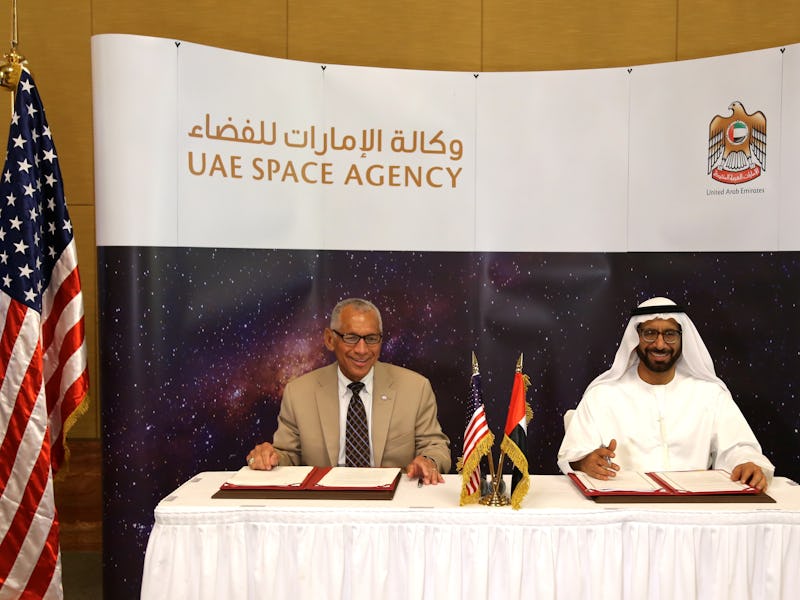Why NASA Partnered With the United Arab Emirates
It's likely part of an effort to offset the high costs behind sending people to Mars.

The United States and the United Arab Emirates announced on Sunday a new agreement signed in aeronautics research and space exploration.
The agreement comes as the latest part of NASA administrator Charles Bolden’s international tour of other countries in the last few weeks, which has included visits to Jordan and Israel. He said work has already started between the countries.
“NASA is leading an ambitious journey to Mars that includes partnerships with the private sector and many international partners,” Bolden said. “I am confident this new framework agreement with the UAE Space Agency will help advance this journey, as well as other endeavors in the peaceful exploration of outer space. Already, technical experts from our two countries are engaged in discussions on several areas of mutual interest, and I believe our two agencies will collaborate for years to come through a common interest in aeronautics, exploration and discovery.”
Bolden’s visits to Jordan and Israel have not yielded a formal agreement, though.
The new partnership is said to cover projects related to space science, Earth observation, aeronautics, and missions involving exploration, technology, safety assurance, and other areas. That’s fairly unspecific right now, although considering the UAE’s interest in emerging and ambitious technologies, and Bolden’s statement about the “exploration of Mars as a number one priority for NASA, the agreement will probably have a heavy focus in developing, testing, and launching new kinds of spacecraft designs and orbital equipment related to Martian missions.
It behooves NASA to strike these kinds of deals because of the high costs behind what it will take to actually send people to the red planet. A Congressional hearing earlier this year estimated it will take $500 billion over two to four decades before we’re actually able to send astronauts to Mars. Meanwhile, current estimates only peg about $180 billion over 20 years allocated toward that goal.
Enlisting the help of rich countries like the UAE, eager to unload that cash into ambitious projects, is an ideal way for NASA to make up the monetary divide.
Of course, the UAE is a newbie when it comes to space. The country’s work is so far pretty much confined to hopes to send an unmanned probe to the red planet by 2021, and it’s unclear if it will make that goal. Nevertheless, the agreement with the U.S. is the latest in a string of similar deals forged with countries like China and the UK.
Perhaps the UAE can make a splashing surprise like other fresh space players around the world.